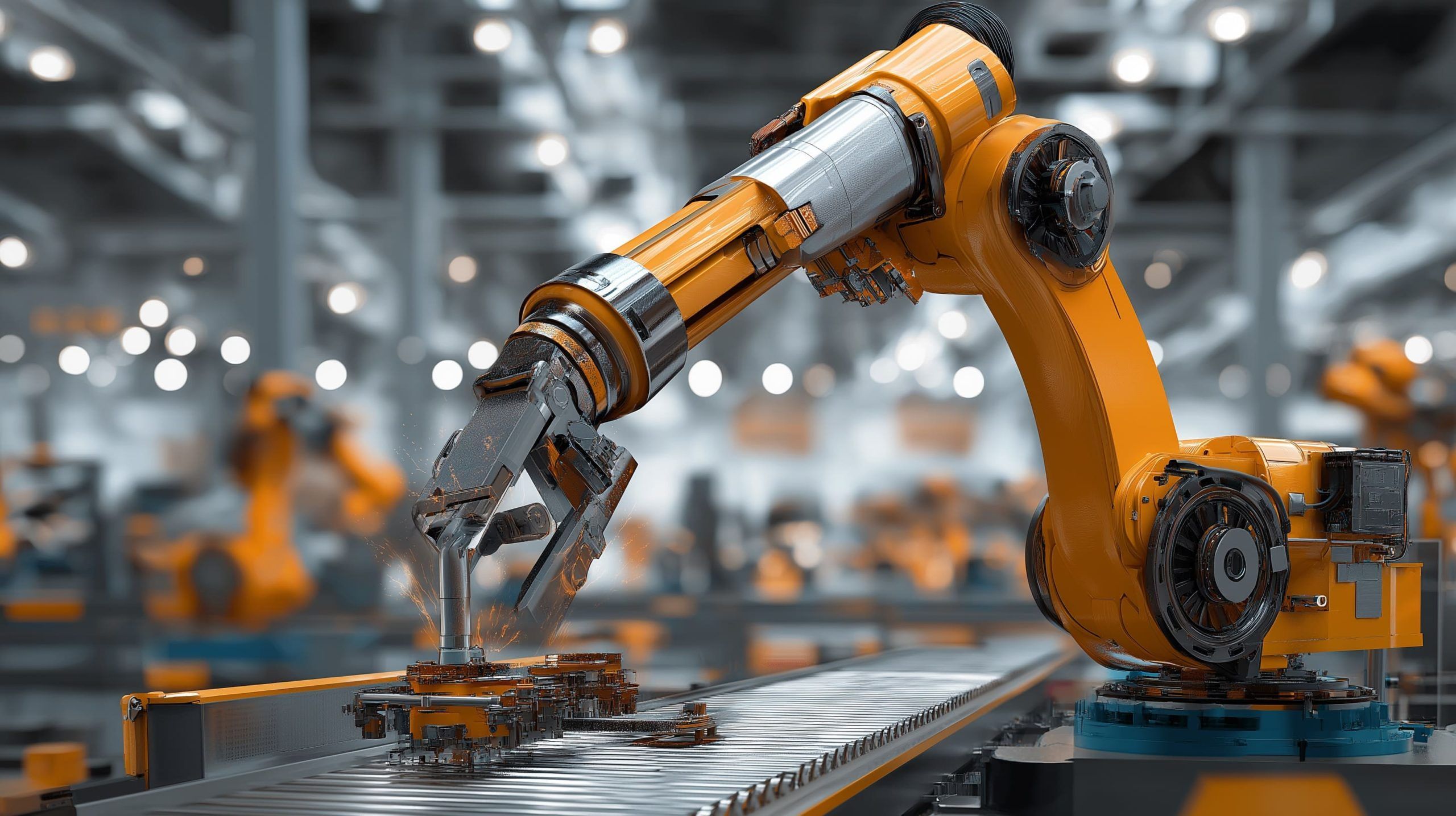- Hexagon unveiled its first industrial humanoid, AEON, a dual-locomotion robot, at the Hexagon LIVE Global event in 2025 to tackle labor shortages in manufacturing and logistics.
- Wandercraft introduced the Calvin humanoid robot as part of a Renault Group partnership, with Renault taking a minority stake and investing €50 million to co-develop Calvin for Renault factories.
- Germany’s NEURA Robotics premiered the third-generation 4NE1 cognitive humanoid at Automatica 2025, alongside the market launch of MiPA, a home and care service robot.
- Foxconn (Hon Hai) and Nvidia announced plans to deploy humanoid robots on the production line of a new AI server plant in Houston, Texas, with deployment targeted for Q1 2026.
- Meta unveiled V-JEPA 2, a 1.2-billion-parameter world model trained on over a million hours of video to give robots common-sense intuition and enable zero-shot planning.
- 1X Technologies debuted its Redwood AI model to empower its NEO humanoid to autonomously perform tasks like doing laundry, answering doors, and navigating around furniture.
- At Automatica 2025, ABB launched three heavy-duty robot arms—IRB 6730S, IRB 6750S and IRB 6760—and the Flexley Mover AMR P603, with 6730S/6750S payloads up to 350 kg, IRB 6760 handling 900 parts per hour, and AMR capability to move 1,500 kg with ±5 mm precision.
- The IFR reports that 2024 industrial robot installations were valued at $16.5 billion with over 4.28 million robots in operation, Asia accounting for about 70% of installations (China alone 51% in 2023), Europe 17%, Americas 10%, and 2023 saw over 540,000 installations.
- Midea completed its acquisition of KUKA in 2025, signaling ongoing cross-border consolidation in the robotics industry.
- ISO 10218:2025 became the first major revision since 2011 after an eight-year effort led by the Association for Advancing Automation, adding updated functional safety requirements for collaborative robots and cybersecurity.
June and July 2025 saw rapid advancements in industrial robotics and automation worldwide. From breakthrough humanoid robots and AI-driven systems to major funding rounds and strategic industry shifts, this period highlighted both the sector’s growth and an evolving regulatory landscape across North America, Europe, and Asia-Pacific.
Technological Breakthroughs & Innovations
Rise of Next-Gen Humanoids: In Europe, multiple new humanoid robots were unveiled. Hexagon launched its first industrial humanoid, AEON, at the Hexagon LIVE Global event – a dual-locomotion robot designed to tackle labor shortages in manufacturing and logistics Electronicspecifier. French startup Wandercraft, known for exoskeletons, introduced a humanoid robot called Calvin as part of a strategic partnership with Renault Group (which took a minority stake in Wandercraft) Wandercraft Wandercraft. Meanwhile, Germany’s NEURA Robotics premiered the third-generation of its 4NE1 cognitive humanoid at Automatica 2025, alongside the market launch of MiPA, a service robot for home and care use Neura Robotics. These robots are built to work safely alongside humans (using sensor “skin” and AI perception) and to relieve workers of repetitive or strenuous tasks in factories and warehouses.
Factory Automation Milestone: In Asia-Pacific, Taiwan’s Foxconn (Hon Hai) and U.S. chipmaker Nvidia revealed plans to deploy humanoid robots on the production line of a new AI server plant in Houston, Texas Reuters. If finalized, this would be the first time Nvidia’s products are built with the assistance of human-like robots – a milestone in manufacturing automation Reuters. The companies aim to have the robots working by Q1 2026 when the facility opens Reuters. Foxconn has been training prototypes (including models from China’s UBTech) to perform tasks like picking and placing parts, inserting cables, and assembly, which could transform traditional electronics production Reuters Reuters. Industry observers note that such a deployment, in a spacious state-of-the-art plant, could showcase how far autonomous robotics have come in augmenting factory work.
AI-Powered Autonomy in Robotics: Advances in artificial intelligence are increasingly being integrated into robotics. Meta (Facebook’s parent) in June unveiled V-JEPA 2, a 1.2-billion-parameter “world model” AI trained on over a million hours of video to help robots and other agents understand physical reality and predict outcomes Techcrunch. This model endows robots with a form of common-sense intuition about events (e.g. understanding gravity and object interactions) and enables zero-shot planning for tasks. In parallel, Norwegian-American startup 1X Technologies debuted its in-house Redwood AI model to give its humanoid robot NEO greater autonomy in household chores Rudebaguette. Redwood is a vision-language transformer that integrates perception, locomotion and manipulation, allowing NEO to perform tasks like doing laundry, answering doors, and navigating around furniture on its own Rudebaguette Rudebaguette. Robotics leaders suggest the industry may be nearing a “ChatGPT moment” – using large-scale AI and simulation so robots can learn complex tasks with far less manual programming. As Yann LeCun of Meta put it, world models and advanced AI could enable “real-world AI agents” that help with physical tasks without “needing astronomical amounts of robotic training data” Techcrunch.
Major Industry Launches: Established automation vendors are also pushing the innovation envelope. At Automatica 2025 (Munich) in late June, ABB Robotics expanded its portfolio with three heavy-duty industrial robot arms – the IRB 6730S, IRB 6750S and IRB 6760 – as well as a new autonomous mobile robot, as part of what it calls a new era of “Autonomous Versatile Robotics” Roboticsandautomationnews Abb. The IRB 6730S and 6750S are shelf-mounted robots that can be installed overhead or on mezzanines, capable of handling payloads up to 350 kg and working in tandem with floor-mounted units to maximize throughput Roboticsandautomationnews. These machines offer extended vertical reach, making them ideal for dense production processes like automotive spot welding, die casting and injection molding Roboticsandautomationnews. ABB also introduced the IRB 6760 – a press-tending robot that can service mid-sized stamping lines at up to 900 parts per hour – aimed at automotive and electronics factories Roboticsandautomationnews. In addition, it unveiled the Flexley Mover AMR P603, a compact self-driving cart that uses Visual SLAM navigation and can transport 1,500 kg loads with ±5 mm precision for indoor logistics Abb. ABB’s robotics division president Marc Segura emphasized that “versatility” is the defining factor for robotics in 2025 – combining mobility, dexterity, advanced vision and AI so that robots can switch between diverse tasks autonomously in real-world environments Abb Abb.
Market Trends & Investment Highlights
Surging Adoption and Regional Trends: Global demand for automation remains robust. The International Federation of Robotics (IFR) reports that the value of new industrial robot installations reached $16.5 billion in 2024, with the operational stock now exceeding 4.28 million robots in factories worldwide. Deployment is geographically concentrated – Asia accounts for about 70% of new robot installations (China alone made up 51% in 2023), while Europe contributed 17% and the Americas 10%. 2023 saw over 540,000 industrial robots installed (just slightly below the 2022 peak), and 2025 is on track to continue near-record deployment as companies invest in automation for resilience and productivity. One of the fastest-growing segments is logistics robots: over 113,000 autonomous mobile robots (AMRs) were sold for warehouses in 2023 (up 35% year-on-year), and analysts project the mobile robotics market will exceed $5.5 billion in 2024 with sustained 20%+ annual growth through 2030.
Major Funding Rounds: Investor enthusiasm in the robotics sector remained high through June–July 2025, with several significant venture capital raises for robotics startups:
- Coco Robotics (Los Angeles, USA) raised $80 million to scale its fleet of autonomous sidewalk delivery robots and advance its AI platform Techcrunch. Notably, the round was backed by OpenAI CEO Sam Altman and included a partnership for Coco’s robots to feed real-world data into OpenAI’s models Techcrunch.
- Gecko Robotics (Pittsburgh, USA) secured $125 million in a Series D round (led by Cox Enterprises), doubling its valuation to $1.25 billion and earning “unicorn” status Geckorobotics. Gecko specializes in wall-climbing inspection robots and industrial asset monitoring software, targeting critical infrastructure maintenance in energy, manufacturing and defense.
- Beewise (San Ramon, USA / Israel) closed a $50 million Series D to expand its AI-powered BeeHome robotic beehive systems Prnewswire. This climate-tech startup’s automated hives use robotics and computer vision to care for bee colonies, with the goal of combating global bee population decline and boosting agricultural pollination efficiency.
Corporate Partnerships and M&A: Established corporations are also investing and repositioning in automation. For example, Renault Group’s strategic partnership with Wandercraft (France) came alongside a €50 million investment to co-develop the Calvin robots for Renault’s factories Wandercraft Wandercraft. In China, home appliance giant Midea completed its acquisition of KUKA (a leading German robot maker) earlier in 2025, and is integrating operations to expand in Asia and Europe – reflecting ongoing cross-border consolidation in the robotics industry. Even in emerging markets, players are active: Russia’s PJSC Element Group stated in June that it is working on at least three acquisitions of industrial robotics companies to strengthen its portfolio Interfax. At the same time, some high-profile exits occurred – SoftBank’s Aldebaran Robotics, the maker of the famed Nao and Pepper humanoid robots, was placed into receivership by a French court in June 2025 after years of financial losses Ground. Aldebaran filed for bankruptcy protection (safeguard proceedings) in February and laid off most of its staff while seeking a buyer for its remaining assets Ground. This marked a quiet end for one of the early pioneers in social robotics, underscoring the challenges in monetizing humanoid robots outside of niche markets.
Policy Updates & Outlook
Evolving Standards and Safety: As automation accelerates, regulators and industry groups are updating frameworks to keep pace. In 2025, the global industrial robot safety standard (ISO 10218) received its first major revision since 2011 – the result of an eight-year international effort led by the Association for Advancing Automation (A3). The new ISO 10218:2025 clarifies functional safety requirements and integrates guidelines for collaborative robot operations (previously in a separate technical specification). It also adds provisions for manual operations and cybersecurity, reflecting the latest technological and workplace considerations. “This is a pivotal moment for industrial robotics. With automation advancing at lightning speed, we need safety standards that keep pace,” noted one ISO working group leader, emphasizing that the updated standard will help ensure innovation “goes hand in hand” with worker safety. Manufacturers and integrators are expected to adopt the new safety protocols as they roll out next-generation robots that work more closely with human teams.
Government Initiatives: Governments worldwide are increasingly factoring robotics into industrial policy, though specific new laws in June–July were limited. In the United States, federal agencies continued to fund robotics R&D (e.g. in advanced manufacturing institutes), and Congress debated AI governance that could indirectly affect robotics. Across Europe and Asia, public sector programs are supporting automation in sectors like healthcare, agriculture, and defense. For instance, Japan and South Korea have national strategies to mitigate aging-workforce challenges via robotics, and the EU is investing in robotics innovation through Horizon programs. Such efforts aim to maximize the productivity gains from robotics while addressing workforce transition issues (through retraining and education in advanced tech skills).
Expert Outlook: Overall, the industrial robotics landscape in mid-2025 is vibrant and dynamic. Industry insiders predict that the continued integration of AI and autonomy will redefine robots’ capabilities and expand their applications across sectors. Smarter, more versatile robots – from factory floors to hospitals and construction sites – are expected to help alleviate labor shortages, enhance efficiency, and improve safety in hazardous or repetitive jobs. Analysts forecast sustained growth in robotics deployments well into 2026 and beyond, as businesses invest in automation to boost resilience and as new use-cases emerge. If the current trajectory holds, the coming years could see robotics increasingly woven into the fabric of everyday operations worldwide, supported by a maturing ecosystem of component suppliers, integrators, and regulations that adapt to this fast-changing field.
Sources:
- International Federation of Robotics (IFR) – World Robotics 2024 report
- Automatica 2025 press releases and coverage (ABB, NEURA Robotics) Roboticsandautomationnews Neura Robotics
- Reuters, TechCrunch – industry news on Foxconn/Nvidia, Coco Robotics, Meta AI Reuters Techcrunch Techcrunch
- Company press releases – Hexagon AB (AEON launch) Electronicspecifier, Gecko Robotics Geckorobotics, Beewise Prnewswire, Wandercraft/Renault Wandercraft
- Robotics media – The Robot Report, Robotics & Automation News (June 2025 highlights) Ground Roboticsandautomationnews
- Association for Advancing Automation – ISO 10218:2025 safety standard announcement
- Expert commentary – HyperAI industry roundup, ABB Robotics vision statement Abb, etc.




